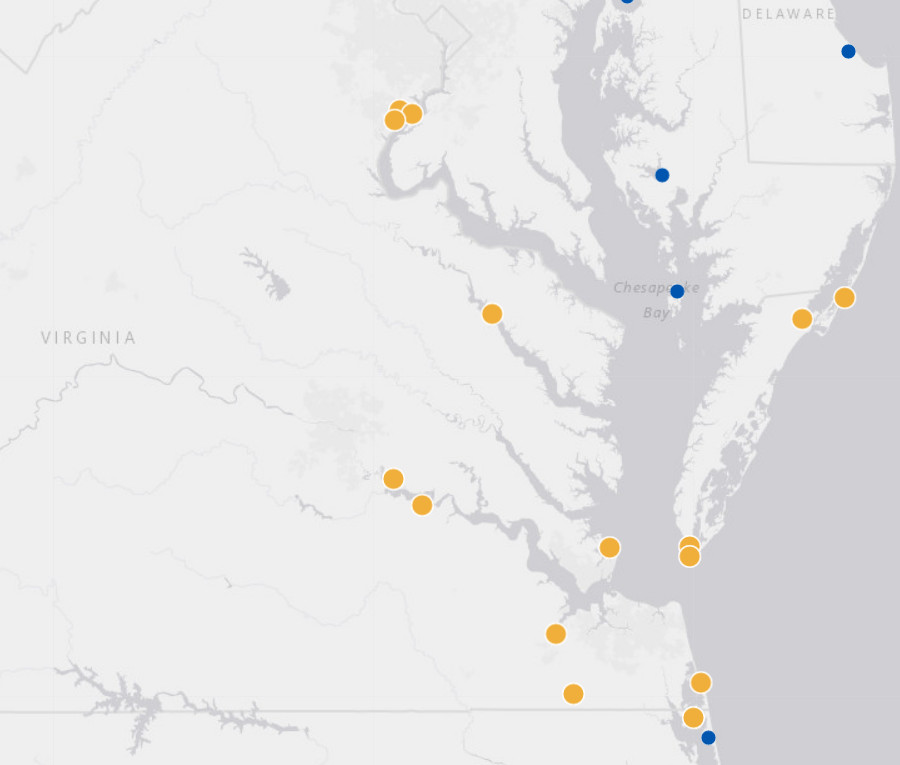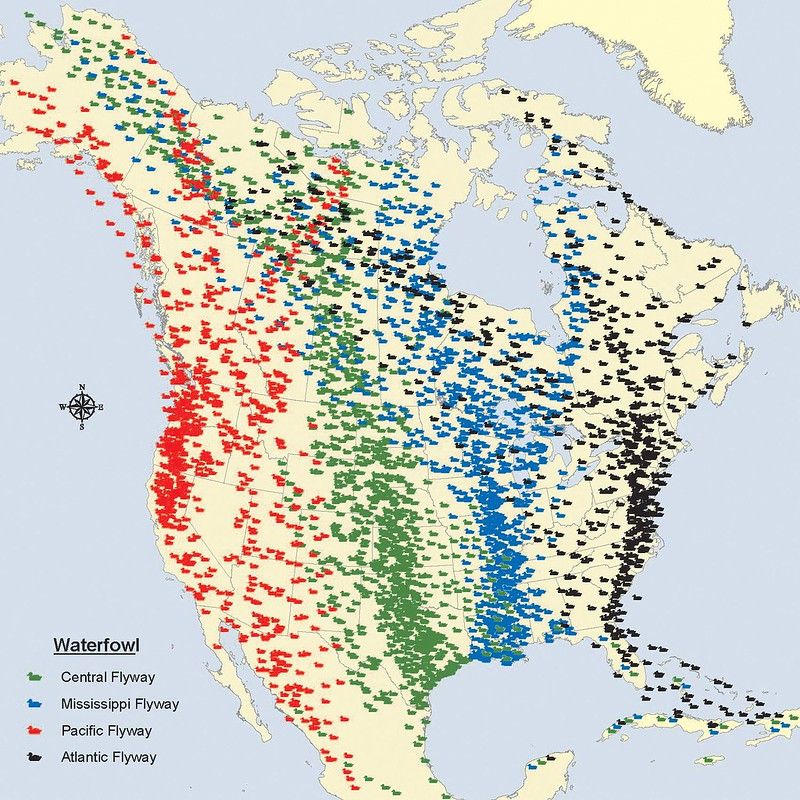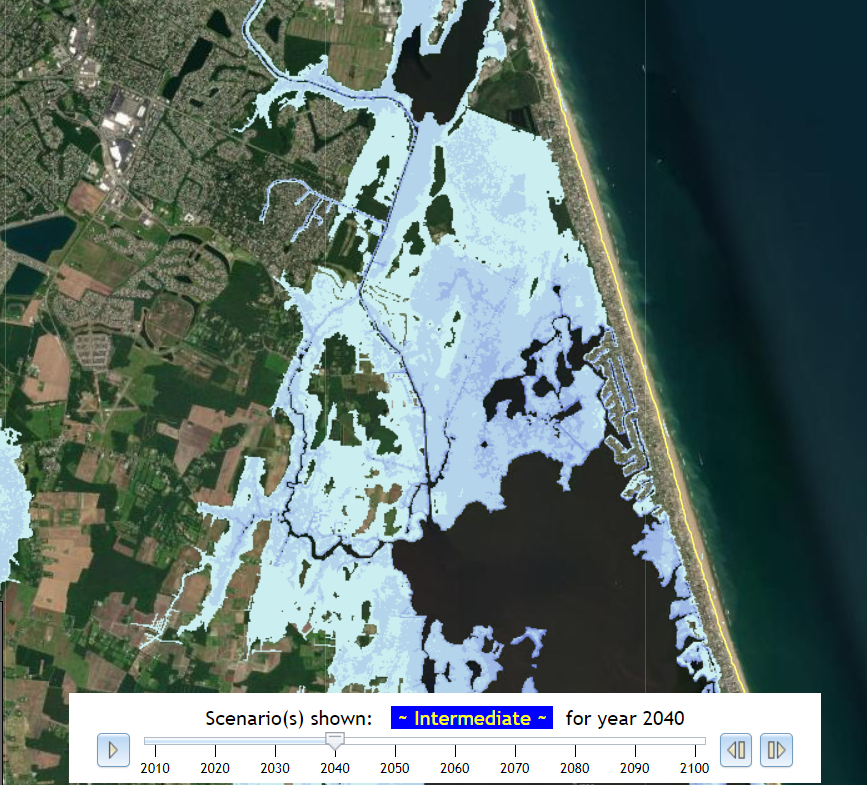
all 15 of the National Wildlife Refuges in Virginia are in the Coastal Plain physiographic province
Source: US Fish and Wildlife Service, Find a Refuge

all 15 of the National Wildlife Refuges in Virginia are in the Coastal Plain physiographic province
Source: US Fish and Wildlife Service, Find a Refuge
The US Fish and Wildlife Service, a part of the Department of the Interior, manages 15 sites in Virginia designated as National Wildlife Refuges. National Wildlife Refuges are distinct from national and state parks, Virginia Wildlife Management Areas (WMA's), Research Natural Areas, and other sites with specific natural resource values managed by other agencies or private organizations.
The first refuge was created in 1903. Passage of the Migratory Bird Treaty Act gave the Federal government authority to manage ducks, geese, and other migratory birds from excessive hunting. That law led to creation of migratory bird refuges to protect breeding and winter habitat, to help restore and maintain populations of key species.
Initial focus was on generating enough ducks and geese to maintain recreational hunting. The Migratory Bird Hunting and Conservation Stamp Act in 1934 provided a funding mechanism to acquire land, and hunters bought a Federal Duck Stamp knowing that the revenue would be used to acquire wetlands needed by waterfowl.
Two separate organizations, the Bureau of Biological Survey and the Bureau of Fisheries, were merged in 1940 to create the Fish and Wildlife Service (renamed "U.S. Fish and Wildlife Service" in 1956). The Federal agency calculated the annual changes of duck populations using the Atlantic, Mississippi, Central and Pacific Flyways and synchronized migratory bird hunting seasons among the states in each flyway.

Virginia is located within the Atlantic Flyway
Source: US Fish and Wildlife Service, Flyways map
Within the agency, the National Wildlife Refuge System was created formally in 1966. In 1997, the US Congress passed the National Wildlife Refuge System Improvement Act to provide policy direction and priorities for the refuge system.1
Wildlife-dependent recreational use is permitted on refuges. The 1997 law defined the "big six" uses that are compatible at refuges - fishing, hunting, wildlife photography, wildlife observation, environmental education, and wildlife interpretation. Each refuge creates a Comprehensive Conservation Plan (CCP) that determines what other uses are compatible, and what regulations are needed to manage the six wildlife-dependent recreational uses.2
For example, the Woodmarsh Trail is closed when bald eagles are nesting nearby at Elizabeth Hartwell Mason Neck National Wildlife Refuge. Wildlife observation by people at that refuge is secondary to the primary purpose of enhancing wildlife populations.3

sea level rise could drown much of the marshland at Back Bay National Wildlife Refuge by 2040
Source: Commonwealth Center for Recurrent Flooding Resiliency, Sea Level Rise Projection